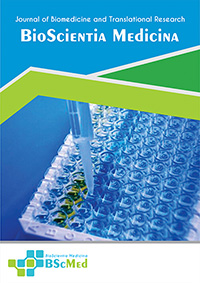Main Article Content
Abstract
Background: Hypertension represents a critical global health challenge and a leading modifiable risk factor for cardiovascular morbidity and mortality. Sedentary behavior is a significant contributor to its prevalence. While exercise is a cornerstone of hypertension management, the comparative efficacy of different exercise modalities—aerobic training (AT), resistance training (RT), and combination training (CT)—on key cardiovascular parameters requires continued synthesis. This meta-analysis aimed to quantitatively evaluate the impact of AT, RT, and CT on systolic blood pressure (SBP), diastolic blood pressure (DBP), cardiorespiratory fitness (CRF) assessed via maximal oxygen consumption (VO2max), and resting heart rate (RHR) in adults with hypertension.
Methods: Following PRISMA guidelines, a systematic search was conducted across PubMed, Cochrane Library, and ScienceDirect databases for randomized controlled trials (RCTs) published between January 1st, 2014, and January 1st, 2025. Inclusion criteria encompassed RCTs involving adults diagnosed with hypertension undergoing AT, RT, or CT interventions for at least 8 weeks, reporting changes in SBP, DBP, VO2max, or RHR. Two independent reviewers performed study selection, data extraction, and quality assessment using the Cochrane Risk of Bias tool. Standardized mean differences (SMD) with 95% confidence intervals (CI) were pooled using random-effects models due to anticipated heterogeneity. Heterogeneity was assessed using the I² statistic.
Results: Seven RCTs, encompassing 410 participants with hypertension, met the inclusion criteria. The included studies were predominantly parallel-group RCTs, with durations ranging from 8 to 16 weeks. Meta-analysis indicated that AT resulted in a statistically significant overall reduction in blood pressure compared to RT (Overall BP SMD: -2.55; 95% CI: -4.97, -0.13; p = 0.04). Furthermore, AT demonstrated significantly greater improvements in VO2max (SMD: -4.84; 95% CI: -7.00, -2.68; p < 0.0001) and RHR (SMD: -3.08; 95% CI: -4.75, -1.42; p = 0.0003) compared to RT. The overall pooled effect for VO2max and RHR combined significantly favored AT (Overall SMD: -3.74; 95% CI: -5.06, -2.42; p < 0.00001). Limited data (two studies) suggested that combination training might offer superior blood pressure reduction compared to RT and potentially AT, but these findings require cautious interpretation due to the small number of studies. Significant heterogeneity was observed in the blood pressure analyses (I² > 88%), whereas heterogeneity was low to moderate for VO2max and RHR analyses.
Conclusion: This meta-analysis indicated that aerobic training provided superior benefits in reducing overall blood pressure, improving cardiorespiratory fitness (VO2max), and lowering resting heart rate compared to resistance training alone in adults with hypertension. Combination training showed potential, particularly for blood pressure control, warranting further high-quality research with larger sample sizes. These findings underscore the importance of incorporating structured exercise, particularly aerobic training, into comprehensive hypertension management strategies.
Keywords
Article Details
As our aim is to disseminate original research article, hence the publishing right is a necessary one. The publishing right is needed in order to reach the agreement between the author and publisher. As the journal is fully open access, the authors will sign an exclusive license agreement.
The authors have the right to:
- Share their article in the same ways permitted to third parties under the relevant user license.
- Retain copyright, patent, trademark and other intellectual property rights including research data.
- Proper attribution and credit for the published work.
For the open access article, the publisher is granted to the following right.
- The non-exclusive right to publish the article and grant right to others.
- For the published article, the publisher applied for the Creative Commons Attribution-NonCommercial-ShareAlike 4.0 International License.





